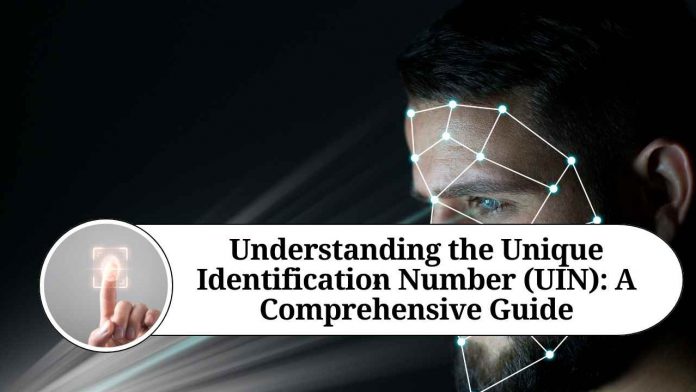Introduction
In today’s digital age, where information and identification play crucial roles in various aspects of our lives, the need for a reliable and unique identification system becomes paramount. One such system that has gained significant prominence is the Unique Identification Number (UIN). In this blog post, we will delve into the concept of UIN and explore its significance in different domains.
The Unique Identification Number (UIN) is a distinctive alphanumeric code assigned to individuals, organizations, or entities to uniquely identify and track them within a specific system or database. It serves as a means of establishing a person’s or entity’s identity, facilitating efficient record-keeping, and enabling seamless access to services and benefits.
Significance of UIN:
Government and Administrative Systems:
UINs are widely used by governments around the world to streamline administrative processes and ensure efficient service delivery. For example, the Aadhaar system in India assigns a unique 12-digit UIN to each resident, enabling them to access various government services, welfare programs, and financial services easily.
Financial and Banking Sector:
UINs play a vital role in the financial and banking sector, enabling accurate identification and verification of customers. They enhance security, reduce fraud, and simplify transactions. For instance, in the European Union, the International Bank Account Number (IBAN) serves as a UIN for bank accounts, facilitating secure cross-border transactions.
Healthcare Industry:
UINs find extensive application in the healthcare industry, where accurate patient identification is critical. Electronic Health Records (EHRs) often use UINs to maintain comprehensive medical histories, ensuring seamless access to patient information across healthcare providers, reducing errors, and enhancing patient safety.
Supply Chain Management:
UINs are employed in supply chain management to track and trace products throughout their lifecycle. Unique identifiers, such as barcodes, QR codes, or serial numbers, serve as UINs, enabling efficient inventory management, product authentication, and recall management.
Intellectual Property Rights:
In the realm of intellectual property rights, UINs are utilized to uniquely identify patents, trademarks, copyrights, and other protected creations. These identifiers help protect and manage intellectual property assets, ensuring proper attribution and legal protection.
Conclusion
The Unique Identification Number (UIN) plays a crucial role in various sectors, providing a robust means of identification, verification, and record-keeping. Its significance spans across government services, finance, healthcare, supply chain management, and intellectual property rights. With the help of UINs, organizations and individuals can streamline operations, enhance security, and ensure efficient service delivery.
As technology continues to advance, we can expect UIN systems to evolve further, offering more sophisticated identification mechanisms and improved data management. However, it is essential to strike a balance between the benefits of UIN systems and the need to safeguard privacy and data protection. Ultimately, the UIN stands as a testament to our ever-growing reliance on secure and efficient identification systems in the modern world.
Read more useful content:
Frequently Asked Questions (FAQs)
Q1: What does UIN stand for?
A1: UIN stands for Unique Identification Number.
Q2: What is the purpose of a UIN?
A2: The purpose of a UIN is to provide a unique identifier to individuals, organizations, or entities for the purpose of identification, record-keeping, and access to services.
Q3: How is a UIN different from other identification numbers?
A3: Unlike other identification numbers, a UIN is specifically designed to be unique within a particular system or database. It serves as a standardized identifier that can be used across different platforms or institutions.
Q4: Where are UINs commonly used?
A4: UINs are commonly used in government systems, financial institutions, healthcare organizations, supply chain management, and intellectual property rights management.
Q5: Are UINs the same worldwide?
A5: UINs can vary from one country or system to another. Different regions or organizations may have their own unique identification numbering systems.
Q6: Can individuals have a UIN?
A6: Yes, UINs can be assigned to individuals. For example, the Aadhaar system in India assigns UINs to residents for various government services.
Q7: How are UINs generated?
A7: UINs can be generated using different methods, depending on the system or organization. They can be alphanumeric codes, numerical sequences, or a combination of both.
Q8: Can a UIN be changed or updated?
A8: In most cases, UINs are permanent and cannot be changed. However, certain systems or organizations may have processes in place to update or modify UINs under specific circumstances.
Q9: Are UINs confidential?
A9: The confidentiality of UINs depends on the system and its associated privacy policies. In some cases, UINs may be treated as sensitive information and protected accordingly.
Q10: How does a UIN benefit individuals or organizations?
A10: UINs provide a standardized and unique identifier, which simplifies identification processes, enhances security, facilitates record-keeping, and enables easy access to services and benefits associated with the system or organization using the UIN.




















